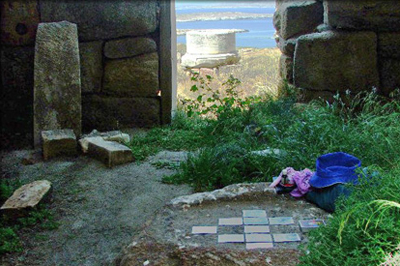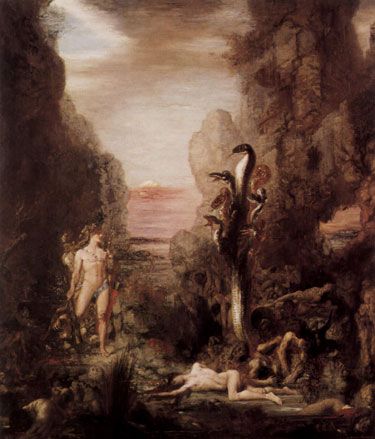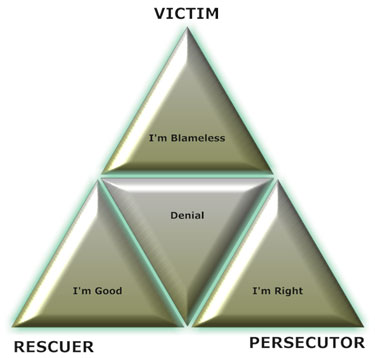Published June 6, 2014 | Link to original
Those children who are beaten will in turn give beatings, those who are intimidated will be intimidating, those who are humiliated will impose humiliation, and those whose souls are murdered will murder.
– Alice Miller
Dear Friend and Reader:
Nessus, the third centaur planet (discovered in 1993, orbit of 122 years), recently entered water sign Pisces. This is a slow-moving point that can go so far from the Sun that it extends into the Kuiper Belt, crossing Pluto’s orbit, and comes so close to the Sun that it goes inside the orbit of Saturn. Nessus is on its way out there now, heading for its furthest reach. After spending nine years in Aquarius, it will spend 19 years in Pisces, which is pretty rad even in the context of eccentric centaur orbits.

Nessus was last in Pisces during the turn of the 20th century, from around 1893 to 1911. And it was in Pisces during the American Revolutionary era, from 1772 to 1790 — spanning from just before the Declaration of Independence was signed to right after the Constitution was ratified. More about that in our Friday, July 4 edition.
Mercury has recently entered Cancer, a water sign, and it’s doing something interesting there over the weekend — stationing retrograde in the very early degrees of that sign. In doing so, it’s spending 19 days in early Cancer, holding a long trine aspect to Nessus, making three exact contacts — on May 31, another while moving retrograde June 15 and a third while moving direct on July 13.
The retrograde will take Mercury back into Gemini for a while (between the last two contacts) and then Mercury will move forward and return to Cancer, making the last trine (on July 13). Mercury moves pretty fast most of the time, so this is an unusual phase of rapport between the planet of consciousness and communication and a minor planet associated with some of the darkest themes that humanity must address on its path of growth and healing.
Nessus moving into Pisces has shifted the story from the theoretical realm of Aquarius into the intuitive, emotional realm of a water sign. The shift also represents that between an earlier discussion among an elite group (in Aquarius) to a wider public (in Pisces). The material of Nessus is challenging to speak about, especially in Pisces, where it may be veiled or take some as-yet unrecognizable form. Speaking about it must come from a place of feeling so as to remain clear and accessible, yet not boil over into aggressive or defensive emoting. That calls for awareness and a safe space to process one’s experiences.
To help clarify the themes of this unusual extended aspect pattern, I think it would be helpful to start with the myth of Nessus and see how its themes play out in the contemporary world — and the discussion that’s currently happening in the wake of the recent murders in Isla Vista.

Nessus is a centaur. What all the centaur myths have in common is a creature who is half-man, half-horse; and in the story, the centaur dies. On one level, all of the centaur myths are actually the stories of the death of the centaurs. In mysticism, psychology and astrology, we can use these stories as healing tools and define death as the process of change. So you might look at the death element as describing the transformation element of that particular centaur.
Notably, all of these myths were buried in the backs of libraries, most of them still in ancient Greek, until the first centaur, Chiron, was discovered in 1977. Then working together, astronomers, astrologers and translators recovered the stories and brought them into contemporary thought.
Thursday morning I picked up a 1958 book called Myths and Their Meanings, and the first thing I checked the index for was Chiron — the most famous of the centaur stories. The writer, a respected author in his field, got the lineage of Chiron wrong. His parents were Kronos and the nymph Philyra, not “a mortal named Ixion and a cloud.” (That is true of all the centaurs except Chiron and possibly Pholus, whose story may be an offshoot of the Chiron myth.)
The Nessus Myth: A Study in Revenge and Karma
Just about everyone is familiar with Heracles, the great hero of Greek mythology. He’s more commonly known in his Roman form, as Hercules. He represents the human quest in the world, often associated with the work of men. He had his 12 labors, and was constantly accomplishing them on one mission or another. In our superhero-obsessed culture, Nessus is important because his myth is the story of the death of Heracles. In other words, Heracles, the great hero of Greek mythology, who starts as Chiron’s student, meets his demise at the hands of Nessus.

This tells us a bit about the centaur myths: clearly, they are not well known, they’re not common fables or fairy tales and not taught in school. Yet they are some of the most significant side streets of mythology, which is a map to human experience and psychology. This is exactly how the centaurs work in astrology. They are not commonly known but somehow their experiences are familiar to all of us.
Here is the story: Heracles and his wife Deianira are escaping from a bad situation — where Heracles had single-handedly killed perhaps a thousand centaurs in a full-on war. The two of them came to the river Evenus. There, Nessus was the self-appointed ferryman, who carried people across the river. Heracles threw his club and shield across and then forded the river, and Heacles negotiated a deal wherein Deianira was to be carried across the river by the centaur Nessus.
There are several versions of the story. In one version, the fee that Nessus negotiates with Heracles is the privilege of carrying his wife across the river.
Here is where the story gets blurry, so for clarity I will quote the original translation, by J. G. Frazer: “So Hercules crossed the river by himself, but on being asked to pay the fare he entrusted Deianira to Nessus to carry over. But he, in ferrying her across, attempted to violate her.”
There is one other significant point. In one telling of the story, Heracles’ marriage to Deianira was based on an arrangement with her dead brother. It’s possible that Heracles passed Deianira to Nessus, knowing he would abduct her, thereby getting out of his marriage. I say this because we know Heracles knew all he needed to know about centaurs. In addition to having been mentored by Chiron, he had just waged war on the entire race of centaurs, and knew their reputation as rapists and murderers.
Centaurs in the Ixion line (as Nessus was) are almost all portrayed as rapists. Heracles has just left the scene of his war against the centaurs, so he knows who he is dealing with. Deianira, meanwhile, is portrayed as a hapless victim of circumstance. But we know something from her name: its etymology translates to “destroyer of men.”
Seeing Nessus “attempt to violate” Deianira, Heracles shot Nessus in the heart with an arrow. The arrow was poisoned with the blood of the Hydra, whom Heracles had killed in an earlier scenario. That poison blood is how Heracles had just killed a thousand centaurs. Its also the poison that killed Pholus, and it’s what was on the arrow that inadvertently hit Chiron. (Those scenes unfold just prior to this one; the myths of Chiron, Pholus and Nessus are intertwined and all involve Heracles.)

The Hydra’s blood was deadly, and Nessus was poisoned by the arrow. As he lay dying, the centaur gave to Deianira a vial of his toxic blood, or a mix of blood and semen (this is ambiguous in the versions and translations), and tells her that it’s a fidelity potion. He says she can use it on Heracles and it will ensure that he’ll remain faithful to her. Whatever happened between Nessus and Deianira, she trusts him enough to believe that this vial really contains a fidelity potion. In reality, he turns her into an unwitting contract murderer of her own husband — once again, hapless.
When she suspects that she might have a reason to use the potion, she spreads it on a tunic which she gives to Heracles to take to a tournament. After he had gone, some of the liquid fell on the ground and it frothed as the sunlight warmed it. Realizing it was toxic, she sent a messenger to warn Heracles, but the messenger arrived too late; the poison was taking hold.
“After killing 12 immaculate bulls as a sacrifice to celebrating the spoils of battle,” Melanie Reinhart wrote in To The Edge and Beyond, “Heracles had already donned the tunic.” As its poison ate into his flesh, he was in long agony, roaming the forest ripping trees out of the ground.
This fulfilled the prophecy of the Delphic Oracle, many years earlier, which said, “No man alive shall kill Heracles; a dead enemy shall be his downfall.” I have also heard this translated to he “will be killed by the blood of a dead enemy,” which has the flavor of one of those Delphic riddles. In this case it was two enemies — the Hydra and Nessus. Heracles, wanting a dignified death, returned to Olympus, where he asked to be burned on a funeral pyre — at which point he revealed the Delphic prophecy he had kept secret for years.
This myth raises more questions than it provides answers. Nessus would seem to be quite a conniver, but Heracles clearly should have known better than to hand his wife off to him. There are certain people who you know are just going to be trouble, and you avoid them — but he does not. In addition, Heracles was the mightiest of men, with divine powers — he could have carried his little lady across the river himself. But he did not. He passed her off — he passed the buck, as it were — to Nessus. And Nessus passes the buck right back to him — by way of his wife.
Stopping the Cycle of Abuse and Revenge
In this myth, we have a triangular situation between a man, a woman and a third entity. We have the theme of rape, and a question of whether there was a setup for that happening, or some nebulous form of consent, implied consent, payment or taking advantage of a situation. We have scenes of trusting untrustworthy people. We have a scenario where “bad blood” is passed on from one party to the next. All of these point to the theme of a cycle or chain reaction of abuse or revenge.

There are many contemporary themes in this myth. The bad blood could be seen as karma, it could be seen as the cycle of abuse, or it could be seen as a sexually transmitted infection (they may be related).
Questions of fidelity, ensuring fidelity and revenge for infidelity are as old as civilization. So too is the notion of a woman’s body as property. Matters of consent, of taking sexual advantage of women, matters of sex as a toll, are all part of our contemporary culture.
All of this is soaking in a society that both practices and preaches ignorance around sex and seems to reward hypocrisy above all else. I would add that the use of sex in commerce, that is, turning sex into a commodity, is one of our most serious problems we face as a society — and nearly everyone buys into it.
The Nessus scenario reminds me of something called the Karpman drama triangle, which is where we get our main concept of codependency.
The idea first appeared in a 1968 article called “Fairy Tales and Script Drama Analysis” by Dr. Stephen Karpman in Transactional Analysis Bulletin. The article sets up the familiar concept of a triangle between the persecutor, the victim and the rescuer. As Karpman says in his article, anyone can play any role at any time, adding, “There is no drama until there is a switch in roles.”
This can happen when a victim decides not to be victimized anymore — and often becomes a persecutor. Or a rescuer is victimized, not understanding that this was part of the script. Often, Karpman says, people play multiple roles in the drama simultaneously. The drama in the Nessus myth involves many changes in roles. In the end, everyone plays out some form of persecutor, victim and rescuer. [As an aside, I must thank my 4th grade teacher at PS 207 in Brooklyn, Mrs. Ursula Fennely, for teaching our class that Greek myths are highly accurate descriptions of the psychology of our society. She knew what she was talking about.]
Where Nessus is at work as an astrological factor, you can look for a complex web of interrelation, a sequence of events where one thing leads to another but the pieces of the story don’t necessarily seem connected. You may have to connect the dots and see the pattern for yourself.

Nessus has themes that feel like the return of karma that may have an extremely long trajectory, like a boomerang that takes the long way around the world. Yet actions have consequences, and causes have effects, and effects have causes.
Once you notice those relationships, you can almost always discover the source. Nessus is a helpful diagnostic tool in handling situations with these themes of betrayal, deception, murder, sexual abuse and sexual infidelity.
It works just as well to reveal something about where and how we’ve been hurt in the past, and how we’re likely to hurt others — and how we can heal that pattern and its resulting injuries. [Note, nearly all readers have Nessus in Taurus (1950s), in Gemini (1960s) or in Cancer (1970s). These dates are approximate and should be checked against an ephemeris.]
Yet in the current environment, especially the political one, Nessus seems to be reminding us of our need to stop the endless cycle of persecutor, victim and rescuer. As my Facebook correspondent Beverly Spicer put it, “Here in the West, we are stuck in the relative stagnation of unconscious behavior on a wild merry-go-round, riding first the horse of persecutor, then victim, then rescuer. But the carnival never stops. Real life begins when we say no to the ride on any of the horses.”
I think what is not exactly transparent here is that from the political standpoint, claiming the right to be the victim is the time of reckoning and revenge. One gets to be next in line for recognition, compensatory damages, protective laws, assured privileges and maybe the punishment of the persecutor. From a spiritual or psychological standpoint, the Karpman drama triangle is invoked. Victims become persecutors, rescuers become victims, and the cycle continues — creating ever more casualties and injured people ready to persecute.

Another of my Facebook participants, Khai Macauley, a female-to-male transsexual (FTM), still in transition, wrote on my timeline Wednesday: “This can no longer be a question of fault and blame but what is possible and what you/I/we can create. Holding someone else accountable doesn’t create anything but another hierarchy.”
There has to be some concept of accountability or ownership, a new kind, because blame makes guilt and guilt makes attack. This is because attack is the projection of guilt. One way to describe the cycle ending is the end of projection of guilt. That is possible but
it’s tricky because the people on the new frontier, newly outside the cycle they may have been caught in and weakened by, have to be really, really strong in their love and forgiveness — because there is a shit storm of guilt flying.
The most touching thing Khai wrote was, “I have been many things to my biological family, the worst of which is crazy, but crazy because I’m ‘pretending’ to be male? Too far. But this is not just a personal journey. I am finding many men feel this way. And they are contorting themselves to try to find inclusion within a culture that only holds space for them as perpetrators.”
Mercury in Cancer, Stationing Trine Nessus
Mercury is now in Cancer, the sign of family, of feelings and of natural instincts. It’s also in aspect to the Aries Point, which is like common ground shared by both the most personal and the widest collective issues. Mercury has been picking up on the themes of Nessus in Pisces, and they have been rippling out into society — in ways both helpful and grossly distorted.
Mercury has been direct through its week-plus of slow motion in Cancer, and now it’s about to station retrograde. This represents a change in polarity for Mercury and it may represent the potential for a ceasefire in the ongoing projection of guilt.
There is something deeply emotionally introspective about Mercury retrograde in Cancer, and this can manifest as honesty with oneself about personal accountability and ownership.

That ownership is not going to happen in a space of blame, of self or otherwise. It’s going to happen in a trusting space, where the whole truth is welcome. We have much to reckon with, and the whole revelation of truth will take time.
We live in a society that does not stop waging war on others and often wages war on its own people. The men who are forced to do this, and everyone around them, carry many injuries associated with warfare. Nearly all of us have an experience of constant psychic or emotional violence through exposure to images of war.
Today, we are “celebrating” the 70th anniversary of D-Day and the invasion of Normandy — if you turn on the TV you will see scenes of the bloodiest battle in modern history.
To some extent we are all complicit, even if only through paying taxes, by refusing to speak up, or by acting directly in support of what we know are illegal military operations. This has been going on for so many years few people remember anything else. It’s no surprise that the war has come home.
Everyone who has come through our culture has suffered pain, abuse and humiliation to some extent. Everyone carries some sense of injury — shame, guilt, fear, the sense of missing personhood and moreover, everyone has plenty to grieve. Due to gender polarization (pushed by religion, family, advertising and on-the-ground culture), injured personhood is polarized to “injured manhood” and “injured femininity,” yet in reality they are identical problems,
seemingly vindicated and then polarized by gender.
If we are going to get anywhere, we must make a safe space for everyone to feel vulnerable. That will only happen in a trusting environment. We might measure that as a common place where women don’t feel stalked and men don’t feel humiliated if they cry.
Lovingly,




